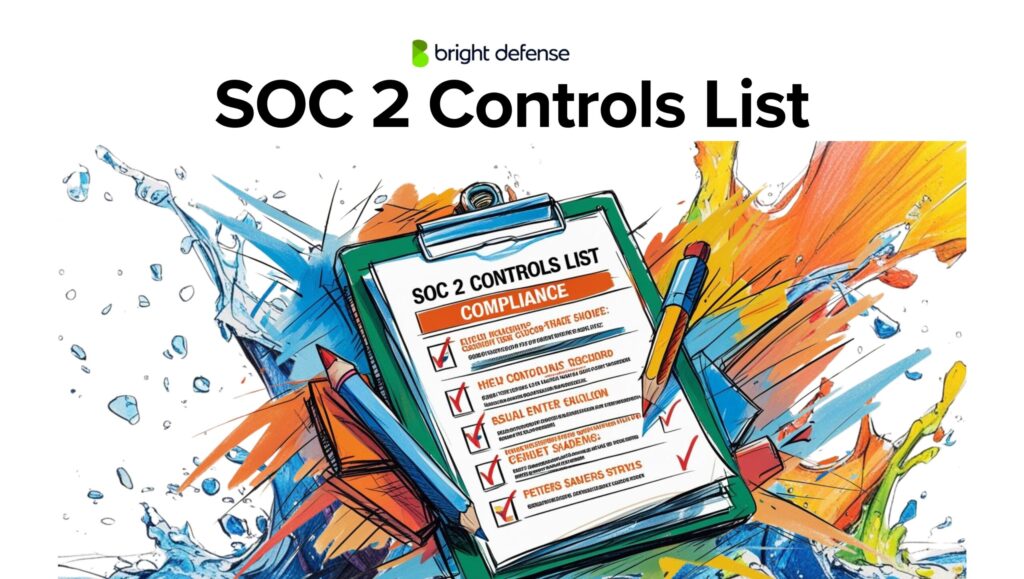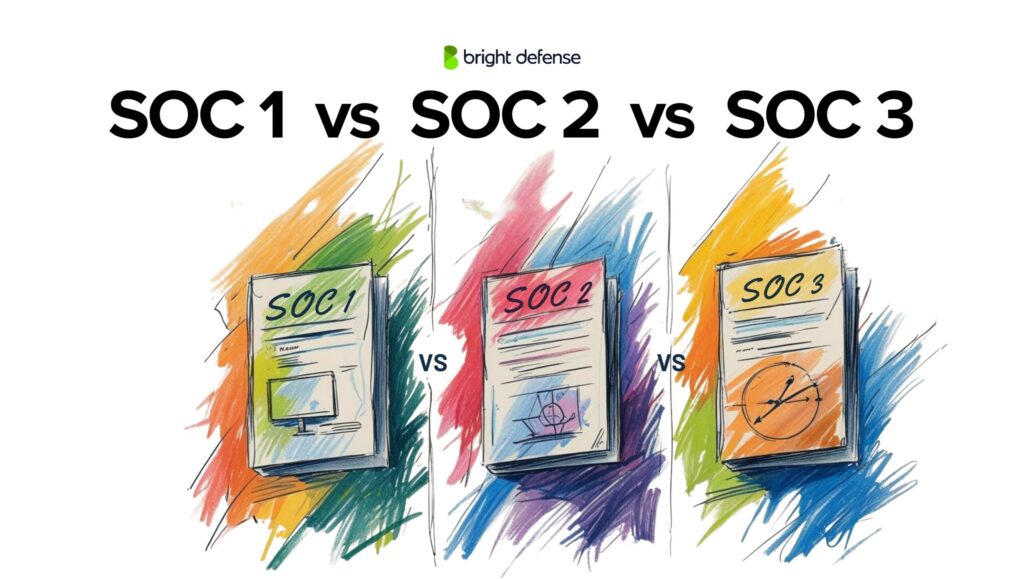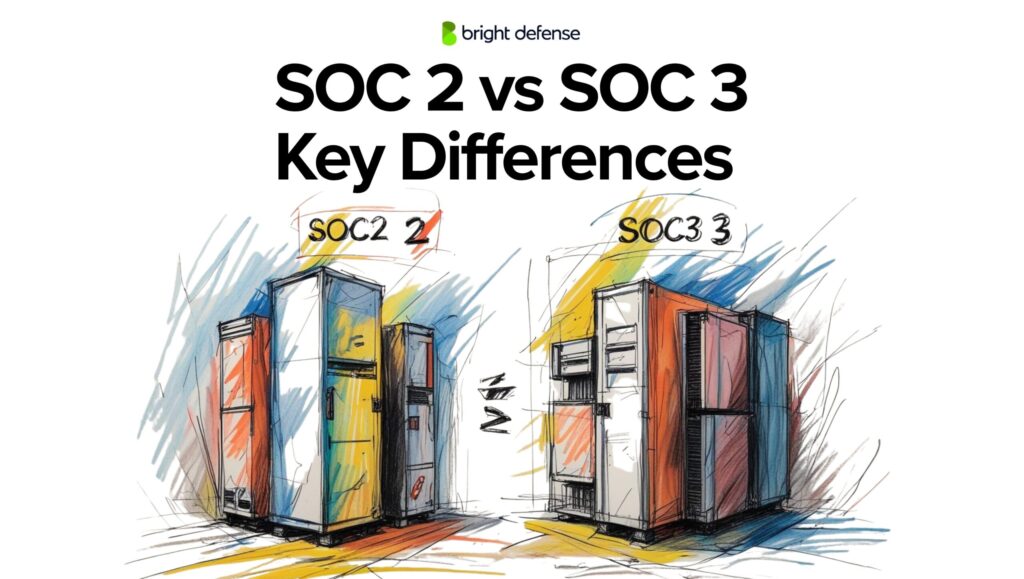
John Minnix - Compliance Strategist
June 28, 2025
A Comprehensive Guide to CMMC Gap Assessment
The Cybersecurity Maturity Model Certification (CMMC) stands as a pivotal framework for defense industry contractors, ensuring they meet the requisite cybersecurity standards.
Its implementation across the defense supply chain marks a significant move towards safeguarding sensitive defense information from cyber threats.
As CMMC progresses through the rule-making process towards becoming law, it becomes increasingly crucial for SMBs engaged in business with prime and sub-contractors to the Department of Defense (DoD) to conduct a CMMC Gap Assessment.
This assessment is essential to identify and implement the necessary measures to comply with the forthcoming rules.
What is a CMMC Gap Assessment?
Diving into the heart of achieving CMMC certification, we uncover the Gap Assessment—a vital initial step that outlines the roadmap to compliance.
This assessment meticulously evaluates an organization’s existing cybersecurity practices against the CMMC standards, identifying gaps and areas for improvement.
It’s not merely a procedural formality but a strategic move that equips contractors with the insights needed to enhance their cybersecurity posture effectively.

Objectives of this Blog Post
This blog post seeks to clarify the CMMC Gap Assessment process for defense contractors. We will guide you from preparation to post-assessment actions, covering key steps to CMMC certification.
Our aim is to thoroughly explain the role of a CMMC Gap Assessment within the wider scope of CMMC compliance.
We intend to empower organizations to make knowledgeable strides in securing their operations and aiding national defense.
Understanding CMMC
The Cybersecurity Maturity Model Certification (CMMC) framework is a comprehensive set of cybersecurity standards that all Department of Defense (DoD) contractors must meet to protect sensitive defense information.
Spanning 3 levels, from basic cyber hygiene practices at Level 1 to advanced and progressive cybersecurity practices at Level 3, the CMMC framework ensures that contractors have the appropriate levels of security for the information they handle. Each level builds upon the previous one, requiring more sophisticated cybersecurity measures as the levels progress.
For businesses aspiring to work with the DoD, achieving the required CMMC level is not just critical—it’s a prerequisite for securing contracts, making CMMC compliance a strategic imperative in the defense industry’s competitive landscape.

CMMC Level 1 Requirements
FAR 52.204-21, known as the Federal Acquisition Regulation clause for Basic Safeguarding of Covered Contractor Information Systems, outlines 15 basic security controls that contractors must implement to protect Federal Contract Information (FCI).
These requirements serve as a foundational cybersecurity framework aimed at securing the processing, storage, and transmission of FCI within contractor information systems. The security controls span across several key areas:
- Access Control: Ensure that access to information systems processing FCI is authorized and controlled, using measures like login credentials and physical access restrictions to safeguard against unauthorized access.
- Identification and Authentication: Implement mechanisms to verify the identity of users and devices accessing the system, ensuring that only authorized personnel can access FCI.
- Media Protection: Secure electronic and physical media containing FCI, including provisions for storage, transport, and disposal to prevent unauthorized access and data breaches.
- Physical Protection: Apply physical security measures to protect information systems, facilities, and related equipment from physical threats and unauthorized access.
- System and Communications Protection: Safeguard information system communications containing FCI, ensuring they are securely processed, transmitted, and protected against interception or tampering.
- System and Information Integrity: Implement measures to protect systems and information from malicious code, perform regular security scans, and ensure that system flaws are promptly addressed.
Meeting FAR 52.204-21 requirements goes beyond following federal mandates. It’s about building a robust cybersecurity framework that shields sensitive government data against emerging threats.
Contractors targeting compliance need to perform an in-depth gap assessment. This identifies weaknesses in their existing cybersecurity measures. Then, they must craft a detailed plan to remedy these gaps, securing FCI as required by the regulation.
CMMC Level 2 Requirements
CMMC Level 2 is designed for organizations that handle Controlled Unclassified Information (CUI). Meeting its requirements involves full implementation of the 110 security controls outlined in NIST SP 800-171. These controls are grouped into 14 security families, covering access control, incident response, risk management, and other key areas of cybersecurity.
A NIST 800-171 Gap Assessment helps determine how closely an organization’s current practices align with these controls. It identifies weaknesses, uncovers missing safeguards, and outlines steps needed to meet CMMC Level 2 expectations. This process forms the foundation for protecting sensitive federal data within nonfederal systems.
Focusing on the 14 Security Requirements of NIST 800-171
NIST SP 800-171’s security requirements are meticulously designed to cover every facet of CUI protection, from how access is controlled to how information is monitored and maintained. These requirements include:
- Access Control: Limit information system access to authorized users, processes, or devices.
- Awareness and Training: Ensure that all users are informed about the security risks associated with their activities and the applicable policies, standards, and procedures.
- Audit and Accountability: Create and retain system logs to enable the monitoring, analysis, investigation, and reporting of unlawful, unauthorized, or inappropriate information system activity.
- Configuration Management: Establish and maintain baseline configurations and inventory of organizational systems.
- Identification and Authentication: Manage and verify user identities and establish minimum security requirements for authentication.
- Incident Response: Establish operational incident-handling processes, including preparation, detection, analysis, containment, recovery, and user response activities.
- Maintenance: Perform maintenance on organizational systems and ensure that maintenance tools, techniques, and personnel are properly controlled.
- Media Protection: Protect and control information system media containing CUI, both paper and digital.
- Personnel Security: Screen individuals prior to authorizing access to information systems containing CUI.
- Physical Protection: Limit physical access to organizational information systems, equipment, and operating environments.
- Risk Assessment: Assess the security risks associated with the processing, storage, and transmission of CUI.
- Security Assessment: Assess the security controls in organizational systems to determine if the controls are effective in their application.
- System and Communications Protection: Monitor, control, and protect organizational communications at external and key internal boundaries.
- System and Information Integrity: Identify, report, and correct information and information system flaws in a timely manner.

The Role of Gap Assessment in CMMC Compliance
A CMMC Gap Assessment rigorously compares an organization’s cybersecurity practices with CMMC standards. It identifies discrepancies and areas for improvement, creating a customized plan to address these gaps. The goal is to outline a clear path to achieve the needed CMMC level, meeting or surpassing DoD cybersecurity requirements.
This assessment is the first step in the CMMC compliance process, guiding all further actions. It assesses cybersecurity maturity and initiates strategic planning for security enhancements.
By identifying specific weaknesses and suggesting targeted improvements, the Gap Assessment helps organizations efficiently allocate resources to boost their cybersecurity in line with DoD standards. This enables defense contractors to progress towards full CMMC compliance confidently, securing contracts and safeguarding national security.
Preparing for a CMMC Gap Assessment
To prepare for a CMMC Gap Assessment, organizations need to proactively review their current cybersecurity practices. They should compare these against the CMMC framework to spot potential gaps early on. This initial review is vital, helping the organization understand CMMC requirements and establishing a baseline for the assessment.
Internal Review and Documentation
Documentation plays a pivotal role in this preparation phase. Organizations should meticulously document their existing security measures, policies, and procedures. This documentation provides a clear reference point for assessors, facilitating a smoother assessment process and helping to pinpoint areas where the organization’s practices diverge from CMMC standards.

Selecting the Right Partner
Choosing the right partner to conduct the Gap Assessment is another critical step. The ideal partner should not only have a deep understanding of the CMMC framework but also possess experience in the defense industry’s specific cybersecurity challenges. Criteria for selection include certifications, experience, reputation, and the ability to provide actionable insights and recommendations.
Additionally, consider the partner’s approach to the assessment—whether they offer a collaborative process that aligns with your organization’s objectives. This choice is fundamental, as the right partner will not only accurately assess your current state but also guide your organization towards effective strategies for achieving CMMC compliance.
Conducting a CMMC Gap Assessment
Conducting a CMMC Gap Assessment requires systematically reviewing an organization’s cybersecurity against CMMC standards. The process begins with assessors understanding the current cybersecurity environment.
They then compare this with CMMC requirements to find compliance gaps and suggest improvements. This methodical process examines all key cybersecurity areas, including policies, controls, and training.
Key Areas and Practices Assessed During the Process
During a CMMC Gap Assessment, assessors focus on several critical areas aligned with the CMMC model’s domains, such as access control, incident response, risk management, and cybersecurity awareness training.
They evaluate the organization’s implementation of cybersecurity practices and processes across these areas to determine the maturity level.
The assessment covers both technical and managerial aspects, ensuring a holistic view of the organization’s cybersecurity readiness. By examining these key areas, the assessment identifies strengths, weaknesses, and opportunities for enhancing the organization’s cybersecurity defenses in line with CMMC requirements.
Common Challenges and Pitfalls to Avoid During the Assessment
Organizations may encounter several challenges and pitfalls during a CMMC Gap Assessment. A common challenge is underestimating the scope of the assessment, leading to unpreparedness and gaps in documentation. Another pitfall is overestimating the organization’s cybersecurity maturity, which can result in overlooking critical vulnerabilities.
Organizations should fully understand CMMC requirements and be open to finding and fixing gaps to prevent issues. Proper documentation and selecting an experienced partner can ease the process. Staying proactive, transparent, and involved ensures a successful assessment and solid basis for CMMC compliance.

Understanding the Gap Assessment Report
The Gap Assessment Report is a critical document in the CMMC preparation process. It outlines the difference between your current cybersecurity posture and the requirements of the target CMMC level. This report typically includes:
- Executive Summary: A high-level overview of your overall compliance status
- Detailed Findings: A breakdown of control areas that are fully, partially, or not implemented
- Remediation Recommendations: Specific actions to address non-compliant areas
- Maturity Score: A summary metric that reflects your alignment with CMMC control expectations
Understanding this report means focusing on which gaps matter most, how they affect your compliance, and why the recommended actions are necessary. It functions as a compliance roadmap—pinpointing weak spots and offering a clear path toward full certification.
Prioritizing Findings and Building a Remediation Plan
Not all gaps carry the same weight. Once the assessment report is complete, prioritize findings based on:
- Security risk
- Impact on certification eligibility
- Dependencies between controls
High-priority issues often include missing foundational safeguards (like access control or system logging) or controls required for your target CMMC level.
Use these priorities to build a remediation plan that includes:
- Specific corrective actions
- Assigned owners for each task
- Resource allocation for tools, staff, or consulting
- Dependencies and sequencing between tasks
The remediation plan must be clear, organized, and actionable. It should support consistent execution rather than generic intent.
Setting Realistic Timelines and Milestones
Implementing remediation tasks takes time, and unrealistic expectations can stall progress. Use your internal capacity, technical complexity, and risk exposure to shape a timeline that’s practical.
Each milestone should:
- Mark the completion of key control implementations or policy rollouts
- Serve as a checkpoint for progress tracking and plan updates
- Provide visibility to stakeholders for status reporting
A phased, milestone-driven timeline helps your team stay focused, track tangible progress, and avoid last-minute rushes during certification preparation.

Moving Forward: From Gap Assessment to CMMC Certification
Developing an Action Plan to Address Identified Gaps
After analyzing the Gap Assessment findings, the next crucial step is to develop a comprehensive action plan that outlines specific measures for addressing identified cybersecurity gaps.
This plan should prioritize actions based on the criticality and impact of each gap on the organization’s overall cybersecurity posture and compliance with CMMC requirements.
It involves detailed strategies for the implementation of necessary cybersecurity practices, tools, and technologies, as well as training for personnel. Clear roles, responsibilities, and deadlines should be assigned to ensure accountability and progress tracking.
The Role of Continuous Improvement in Maintaining CMMC Compliance
Achieving CMMC certification is not a one-time event but the beginning of a continuous journey of maintaining and enhancing cybersecurity practices. Continuous improvement becomes essential in adapting to evolving cyber threats and changes in CMMC standards.
Organizations should establish a culture of cybersecurity awareness and regular review mechanisms to assess the effectiveness of implemented controls and identify areas for enhancement. Regular training, updates to policies and procedures, and periodic reassessments ensure that cybersecurity measures remain robust and compliant over time.
Tips for Successfully Navigating the Certification Process Post-Gap Assessment
Successfully navigating the certification process after a Gap Assessment requires a well-orchestrated approach. Here are some tips to guide organizations through this journey:
- Stay Organized: Keep detailed records of all actions taken to address gap findings, including documentation of policies, procedures, and controls implemented.
- Engage with Qualified Assessors: Work with a CMMC Accredited Body (C3PAO) for the certification audit. Their insights and feedback can be invaluable in fine-tuning your cybersecurity posture.
- Communicate and Train: Ensure that all stakeholders, from executive leadership to operational staff, understand their roles in achieving and maintaining CMMC compliance. Regular training and communication are key.
- Leverage External Support: Consider partnering with cybersecurity consultants or using compliance management tools to streamline the process and ensure all aspects of compliance are covered.
- Prepare for the Audit: Conduct internal audits to prepare for the official CMMC assessment. This helps in identifying any last-minute gaps and familiarizes the team with the audit process.
- View Compliance as a Benefit, Not a Burden: Embrace CMMC compliance as an opportunity to strengthen your cybersecurity framework, which can protect your organization from cyber threats and enhance its market position.
Focusing on these areas, organizations can effectively move from the Gap Assessment phase to achieving CMMC certification, thereby ensuring they meet the DoD’s requirements for safeguarding sensitive defense information.

Final Thoughts
The CMMC compliance journey starts with a Gap Assessment. This first step is crucial, going beyond mere compliance. It offers a chance for organizations to deeply review and improve their cybersecurity. The CMMC Gap Assessment’s value lies in spotting differences between current security practices and CMMC’s high standards. It reveals gaps, setting a clear, actionable course towards compliance and stronger defenses.
We urge organizations, especially those dealing with the Department of Defense, to adopt the Gap Assessment. This mindset promotes ongoing improvement, enhancing compliance and cybersecurity resilience. Seeing the Gap Assessment as a chance, not a challenge, shifts how organizations view cybersecurity. It turns regulatory needs into strategic benefits.
Bright Defense guides organizations to begin their CMMC certification with a comprehensive Gap Assessment. This crucial step builds a strong cybersecurity base, surpassing DoD standards. It positions organizations to win contracts, safeguard national interests, and stay competitive. The journey to CMMC certification is about strategic enhancement, starting with Gap Assessment insights.
Additional CMMC Resources:
Official CMMC Documentation and Resources:
- DoD CIO – CMMC Resources: https://dodcio.defense.gov/CMMC/ – This is the official website for CMMC with policy documents, FAQs, and updates.
- Defense Industrial Base Cybersecurity Assessment Center (DIBCAC): https://www.dcma.mil/DIBCAC/ – DIBCAC manages the CMMC assessment process and provides resources for assessors and organizations.
- CMMC Accreditation Body (CMMC-AB): https://cyberab.org/ – CMMC-AB manages the accreditation of Certified Third-Party Assessment Organizations (C3PAOs).
- NIST SP 800-171 DoD Assessment Methodology: https://nvlpubs.nist.gov/nistpubs/specialpublications/nist.sp.800-53r4.pdf – This document outlines the assessment methodology for DoD contracts.
Tools and Services for Gap Assessment and Compliance:
- CMMC Audit Preparation CMMC Resources: https://www.cmmcaudit.org/ – Provides links to official documents, tools, and training materials.
- CMMC Insights Resources: https://dodcio.defense.gov/CMMC/Documentation/ – Articles, guides, and tools for CMMC compliance.
- NDISAC DIB SCC CyberAssist CMMC Resources: https://ndisac.org/resource-library/ndisac-overview/ – Includes guides, FAQs, and links to other resources.
- C3PAO Marketplace: https://cyberab.org/ – Find accredited C3PAOs for your assessment needs.
Upcoming Webinars, Workshops, and Training Sessions:
- CMMC-AB Events Calendar: https://cyberab.org/ – Find upcoming webinars and workshops from CMMC-AB.
- DIBCAC Events Calendar: https://www.dcma.mil/DIBCAC/ – View upcoming events hosted by DIBCAC.
- National Defense University (NDU) CMMC Workshops: https://cic.ndu.edu/Shared-Media-Manager/Academics/Graduate-Programs/Cyber-Security-Program/ – NDU offers a variety of CMMC workshops and training sessions.
- Industry Associations and Events: Many industry associations also offer CMMC-related webinars and workshops. Check the websites of relevant associations for their event calendars.
Additional Tips:
- Subscribe to the CMMC newsletter for updates and announcements.
- Follow CMMC-related social media accounts to stay informed.
- Network with other organizations working on CMMC compliance to share best practices.
Get In Touch



